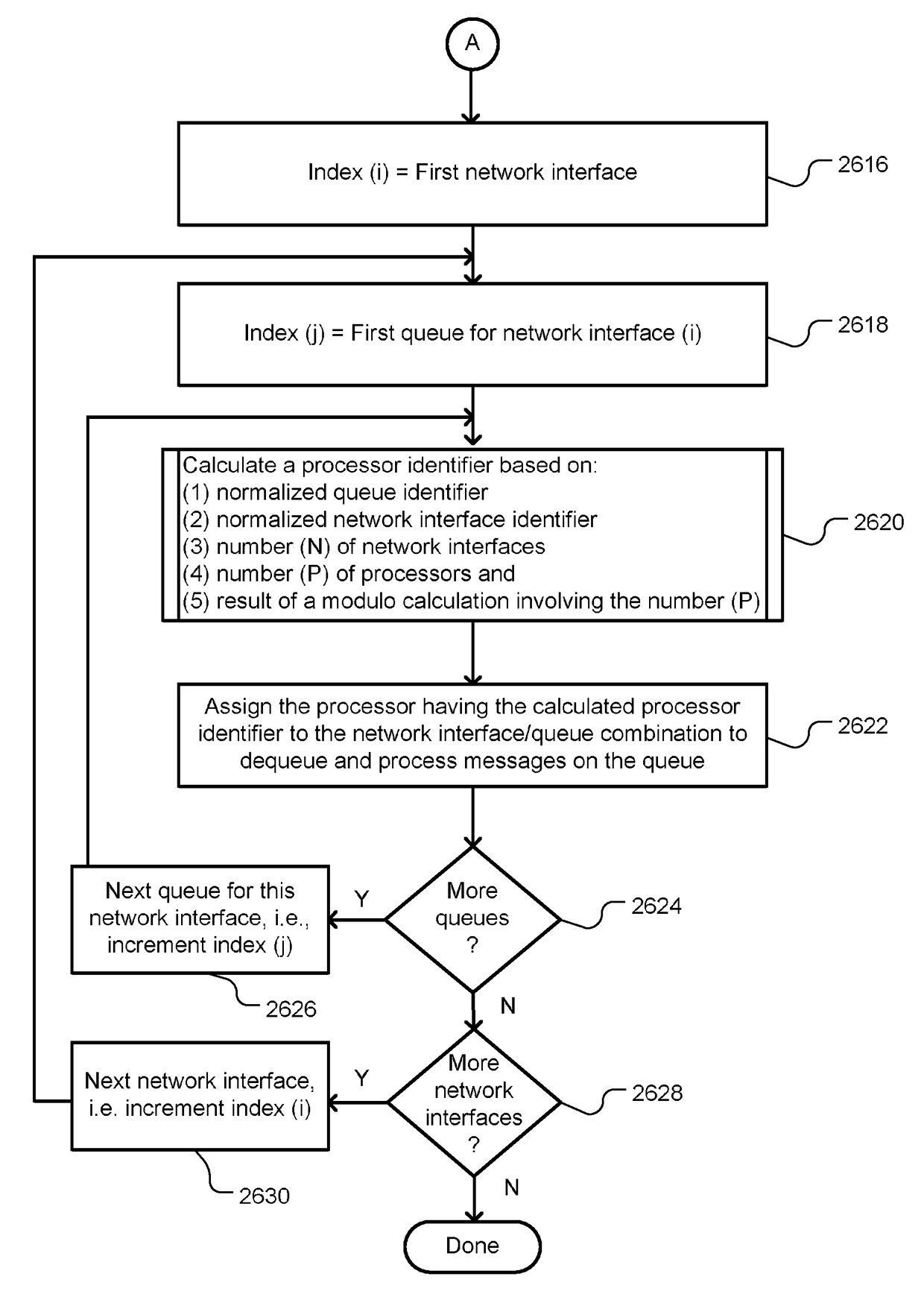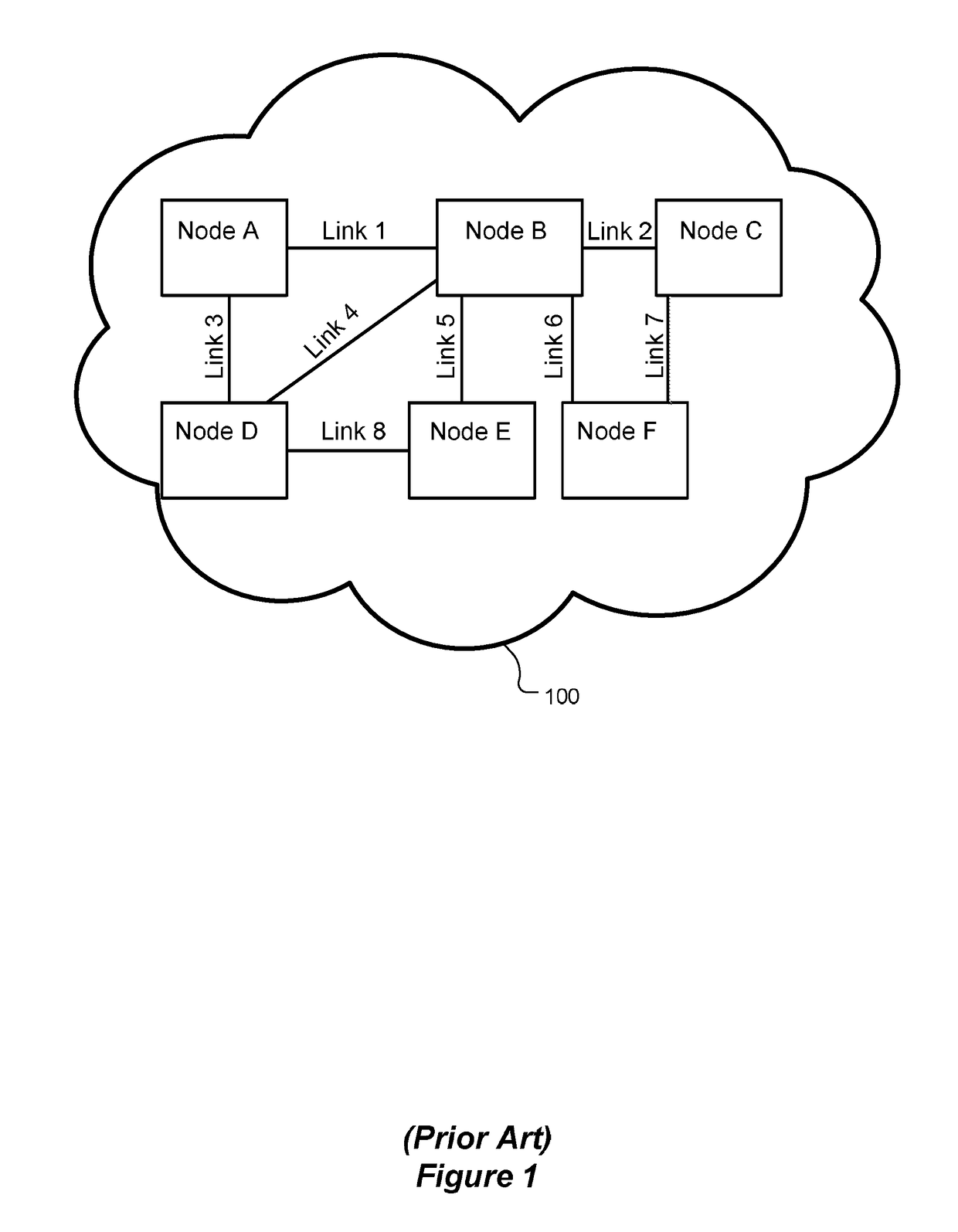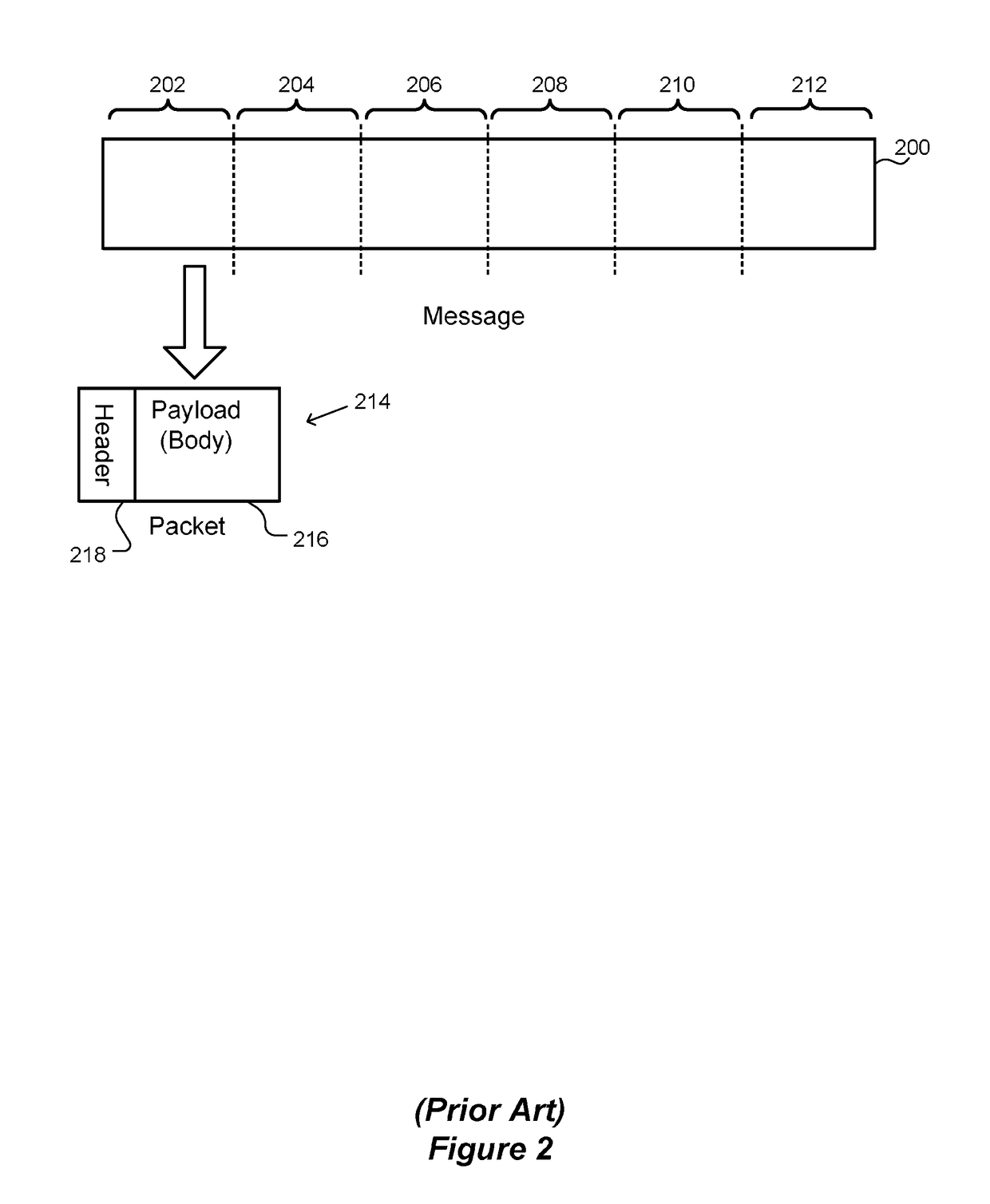Self-configuring computer network router
a computer network and router technology, applied in the field of self-configuring computer network routers, can solve problems such as complex queue-to-processor assignment tasks, processing may be more complex, and the problem of assigning processors to queues of multiple network interfaces
- Summary
- Abstract
- Description
- Claims
- Application Information
AI Technical Summary
Benefits of technology
Problems solved by technology
Method used
Image
Examples
Embodiment Construction
[0006]In accordance with an embodiment of the invention, provides a self-configuring router. The router includes a plurality of P processors and a memory coupled to the plurality of P processors. “P” represents a number of the processors. Each processor of the plurality of P processor has a normalized processor identifier. The router includes a plurality of queues represented by data stored in the memory. Each queue of the plurality of queues has a normalized queue identifier.
[0007]The router also includes a plurality of N network interfaces. “N” represents a number of the network interfaces. Each network interface of the plurality of N network interfaces has a normalized network interface identifier. Each network interface of the plurality of N network interfaces is associated with at least one queue of the plurality of queues. Each network interface of the plurality of N network interfaces is configured to automatically enqueue messages received by the network interface onto the a...
PUM
 Login to View More
Login to View More Abstract
Description
Claims
Application Information
 Login to View More
Login to View More - R&D
- Intellectual Property
- Life Sciences
- Materials
- Tech Scout
- Unparalleled Data Quality
- Higher Quality Content
- 60% Fewer Hallucinations
Browse by: Latest US Patents, China's latest patents, Technical Efficacy Thesaurus, Application Domain, Technology Topic, Popular Technical Reports.
© 2025 PatSnap. All rights reserved.Legal|Privacy policy|Modern Slavery Act Transparency Statement|Sitemap|About US| Contact US: help@patsnap.com



